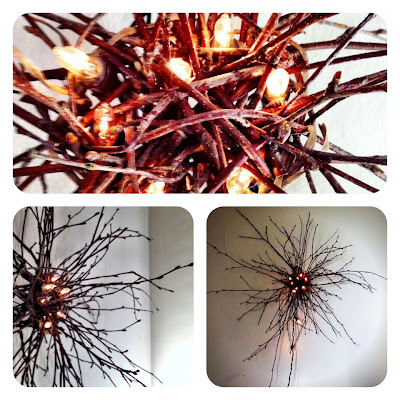Every year we had make most of our Christmas gifts. My nieces and nephews are getting to an age where we can really really enjoy making stuff for them. I wanted to make a den building adventure kit for my oldest nephew. I had some ideas but I knew the Forest Education Initiative Facebook page would come up with more. They are a real source of inspiration and support for lots of people who work outdoors with children.
I didn't use all the ideas they came up with as I would have needed a truck rather than a bag to put them all in, but check out the thread here if you would like some ideas too.
But what's in the adventure bag?
Every adventurer needs a wind up torch...
...and some binoculars. We made these binoculars together on Christmas eve.
To go with the note book and twiggy pencil
Some flags to decorate your den,
A really wide selection of fastening; like ropes and pegs, carabiners and those really practical bungees with bobbles on the end. These are just some of the selection.
A really useful tarpaulin made from half of an old tent. It already had lots of zips and eyelet holes, hooks and Velcro fastening points. I added a few more eyelets to make it even more flexible and it is waterproof too, which is a bonus. I also added a piece of parachute silk which was a drogue from a larger parachute. I added lots of eyelet holes to make good fastening points. You can also see the 'instructions' and the corner of the fleecy sit-mat I made using a bit more of the tent as waterproof backing.
Every explorer needs a treasure map. This one was embroidered with my sewing machine.
We made an indoor den on Christmas day and cooked the dinner on the fire...
...and we hung up this sign until dinner was ready.
Luckily it is a reversible sign so we could welcome people in too.
Of course any adventurer needs a useful bag to keep all his supplies in...
...and interesting things to discover.















.jpg)









































